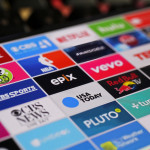Audience Analytics 101
Audience
Weather affects the foods we crave, so it’s no surprise that people drink more hot chocolate in the winter and sweet tea in the summer. But did you know that juice sales spike when it’s windy outside? Not all correlations of weather condition and brand sales are intuitive, so this is where we must learn to not only trust data, but leverage it to better serve audiences and bottom lines.
Speaking at the National Association of Broadcasters (NAB) conference in April, an analyst at The Weather Company (parent of The Weather Channel, which has partnered with Watson, IBM’s artificial intelligence platform) shared that these are just some of the findings made possible by tapping into audience analytics and artificial intelligence (AI). The Weather Company can now help brands increase media delivery as well as foot traffic to stores, when optimal weather conditions hit for particular products. The Weather Channel’s app is one of the most downloaded and, because 80 percent of mobile users share their location, geo-targeting efforts are a no-brainer to help marketers and advertisers optimize their efforts and gain efficiencies during certain weather conditions.
Audience analytics are increasingly being used by content companies to know what kinds of video to serve up in the future, based on what consumers watch, when, and for how long. Analytics tools can help predict demand for certain kinds of content around the world. According to Recode, the BBC has used AI to predict where it might find the greatest demand for some of its series, such as “Sherlock.” Netflix can mine its subscriber data and viewing habits to inform what its next original production should be, by analyzing subscriber psychographics that it may wish to tap into, as well as genre preferences.
Tracking video viewership minute-by-minute can help us better understand audience engagement, which informs future content creation, including plot construction. When did viewership fall and when did people dump out of the video entirely? Audience analytics can also help identify new audiences that have been previously unknown or overlooked.
The wealth of personal information that people willingly share online—whether via social media or on blogs—makes individual targeting easier than ever. As one media executive at this year’s NAB conference noted, “Before, if I wanted to reach pet owners, I had to figure out which age and gender bucket they fell into, and then do a bunch of modeling. Now, I can reach pet owners directly.”
But, availability and accessibility does not mean all data is ready to go and that it can be harvested by anyone. There is high industry demand for capable audience analysts who not only know how to ask the right questions of the data, but know how to detect trends and patterns and to extract meaningful insights.
Enter the University of Florida College of Journalism and Communications’ online master’s program in Audience Analytics. The program launched in January in response to industry demand and was designed after a year’s worth of conversations with top analysts at companies such as Nielsen, Google, Facebook, ESPN, Univision, NBCUniversal, Starcom and the Media Rating Council. These experts emphasized the need for not only the skills outlined above, but also analysts who know how to assess the quality of a dataset in the first place. How do you know whether you can trust the data? Was it generated by a reputable source with human beings involved, or could it have been the result of bots or other fraudulent activity? Is the data representative of the population it was intended to measure? Was consumer privacy compromised?
Finally, our experts stressed that proficient analysts today must also be storytellers. What does the data mean? What are the implications for my business? The Audience Analytics program at UF goes beyond the analysis to train students to be effective communicators of insights. Our Data Storytelling and Visualization course equips students to do this not just visually (with training in Tableau), but in written and oral form as well.
Analysts today need to be able to clearly tell stakeholders what matters and why. These skills and this program are an extension of what the College of Journalism and Communications does best. By combining our longstanding faculty expertise in audience analysis, as well as strong writing and communication skills and methodological rigor, we think we’ve devised a winning program that is responsive to industry needs.
If you think you, your company, or someone you know may benefit from our online degree in Audience Analytics, check out the program web site or contact the program’s director, Dr. Amy Jo Coffey. We accept applications year-round and look forward to seeing you!
Amy Jo Coffey, Ph.D., is director of the online master’s program in Audience Analytics. She can be reached at acoffey@jou.ufl.edu .
Posted: July 25, 2017
Insights Categories:
Audience
Tagged as: Amy Jo Coffey, audience analytics, audience research, distance learning, online master’s program in Audience Analytics, Telecommunication, UF Research


